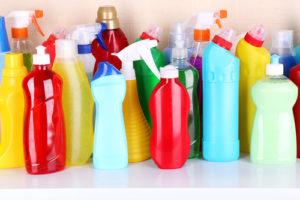By: Design for Change Recovery
Categories:
Are People Still Abusing Inhalants?
You are here:Inhalants had a short period of fame in the 1990s. As an increasing number of teenagers and young people were abusing inhalants, more media talked about how dangerous household chemicals and chemicals bought at the store were becoming. Inhalant addiction is not a thing of the past. Today, many people are still struggling with an addiction to inhalants, but their stories are lost in the sea of a worldwide focus on the opioid epidemic. In passing, moments like a woman addicted to inhaling Dust-Off featured on the popular TV show Intervention brought the addiction to the spotlight. Unfortunately, such moments of making a spectacle out of a life-threatening addiction de-legitimizes the addiction in the public eye, creating a deeper addiction and a deeper stigma around inhalants’ misuse or inappropriate use. However, inhalant misuse or inappropriate use is still a genuine and hazardous problem. Many areas worldwide are seeing another surge in inhalant misuse or inappropriate use as people who are addicted to expensive drugs are looking for refuge in less expensive options.
Inhalants can include any chemical which creates a high. People use household cleaning products, paint, harmful chemicals, and many other chemical products to get high. One of the most popular is “canned air” or spray used for cleaning. Sold for cleaning small crevices, the cans are available for purchase in many stores with a small nozzle attached. The only warning label on the can include a warning for how cold the can will become once it is shaken up and activated. At full force, the can could become so cold as to burn the hand. People who are addicted to inhalant misuse or inappropriate use using these products often experience frostbite, burning their mouths, destroying their teeth, and causing problems to the muscles and bones. The “air” in canned air is a highly toxic chemical called 1,1-difluoroethane. Users look to taking “hits” off of these cans of cleaner because the toxic chemicals are so strong it creates sensations of euphoria and intoxication much more quickly than any other substance.
Unfortunately, like any addiction, users can and will develop a tolerance. Some overdose and arrest reports due to inhalant misuse or inappropriate use have revealed that people can use dozens of cans a day, sometimes more. Overdose frequently occurs. Inhalants are stimulant drugs, meaning they speed up the brain and the central nervous system, communicating with key organs like the heart. The most common cause of overdose is a cardiac arrhythmia, where the heart beats too quickly and too irregularly, then shuts down.
You don’t have to let inhalant addiction continue to control your life. There is a refuge in recovery. At Design For Change, we offer clients a refuge from addiction so that they can find the hope and freedom recovery has to offer. We’re changing lives, one step at a time, through proven clinical methods, twelve-step integration, and innovative programs for healing.



